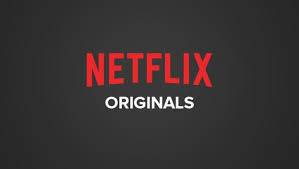Inside Netflix's Original Content Strategy
Why is the streaming giant investing so heavily in producing original content?
Note: This article references 2019 figures since only that year’s data is publicly available.
Netflix averaged just over one new original TV program or movie for every day of 2019.1
One original per day of 2019. Let that sink in.
And per Reed Hastings, that number is only going to increase. 2
Netflix’s financial statements say the same story. The cash spend, which represents the money Netflix spends upfront to produce its own content, has been higher than the amortization expense of licensed content assets since 2013. This means that the company is spending more on producing its own content since cash spend is increasing at a faster rate than amortization.
Are Netflix's competitors also releasing original programming at this rate?
Nope.
For context, Netflix spent ~$12.3B in original content in 2019. That's 2x of what Apple & Amazon spent (the figure for Amazon is inclusive of video and music, so the figure for only video is lesser), 6x of what HBO Max spent, and 12x of what Disney spent.3
So, why is Netflix so committed to original programming?
To answer that question, we need to go back to the pre-2013 era - a time when Netflix Originals didn't exist.
Back then, Netflix would stream content by acquiring it from studios via licensing agreements.
The value chain looked like this:
Now, there were several problems with this arrangement:
Netflix's ability to provide subscribers with content was dependent on the studios licensing the content to Netflix. If the studios changed their terms and conditions or were no longer willing or able to license content, Netflix's ability to stream content to subscribers would have been adversely affected
The studios were monopolistic - a particular type of TV program or movie was available with just one studio - and could demand higher margins. A classic example of how Porter's "Bargaining power of suppliers"4 and John Malone's "Wholesale transfer pricing power"5 manifests itself
The studios licensed the same content to multiple subscription-based services and did so on different terms and conditions. So, Netflix and its competitors offered consumers the same content titles but licensed them at different rates. This affected margins due to price matching
The licenses were valid for a particular duration and applicable within a specific geography. Once the term expired, Netflix would have to repurchase the license. This represented a recurring cost. Moreover, Netflix would have to license content in advance of entering into a new geographical market. Acquisition and retention were impacted if consumers in that territory did not favorably receive the content, and given the long-term nature of the commitment, adjustment of the content offering wasn't possible
The licenses required advance payments, i.e., Netflix had to pay for next year's content against this year's revenue. If next year's subscriber and revenue growth didn't match up to expectations, liquidity was affected
Payment terms of the licenses were tied to theatrical exhibition receipts, that is, the ticket price in movie theatres. Netflix would buy these licenses before the ticket price would be decided to get access to the content before the competition. As a result, they would get into licensing agreements without knowing what the ultimate cost per title would be
The cost of licenses began to increase due to bidding wars with other streaming sites for exclusivity
In short, Netflix's cost wasn't fixed.
The solution?
Simple: take the studios out of the equation.
The synergy between content creators and Netflix led to the birth of Netflix Originals. This eliminated the licensing situation and put Netflix in control.
Netflix now pays a flat fee ("fixed cost") to produce the content and then doesn't pay another cent once the content is made.
Thus, by integrating supply and distribution, Netflix created a competitive moat by way of making their cost base fixed.
What's the competitive moat, you ask?
Economies of Scale.
The fixed cost of content production can be spread across Netflix’s subscriber base. And as the subscriber base increases, the fixed cost/subscriber declines.
Here's some quick math to prove this point:
Netflix's subscribers = 210M
Hulu's subscribers = 40M
Marginal cost/subscriber = $0
Cost of producing "The Crown": $520M
That's $2.5/subscriber for Netflix & $13/subscriber for Hulu.
The unit costs for Hulu are 5 times that of Netflix!
Thus, not only does Netflix benefit by way of reduced costs, it also set up a barrier of entry for the competition.
If Hulu wants to compete with Netflix's original content, not only do they have to make the high up-front investment to produce the content, but they also have a smaller subscriber base to spread the cost across.
This provides Netflix a superior cost advantage and allows them to spend more on marketing, content production, and product.
Therefore, as long as Netflix can maintain its subscriber base and make up for lost subscriptions, its investments in producing original content will be justified.
https://variety.com/2019/tv/news/netflix-more-2019-originals-than-entire-tv-industry-in-2005-1203441709/
https://www.theverge.com/2020/9/8/21427544/netflix-originals-2021-films-tv-shows-production-europe-asia-united-states
https://www.fool.com/investing/2019/09/08/how-much-are-streaming-giants-spending-on-content.aspx
https://corporatefinanceinstitute.com/resources/knowledge/strategy/bargaining-power-of-suppliers/#:~:text=The%20Bargaining%20Power%20of%20Suppliers,the%20availability%20of%20their%20products.






